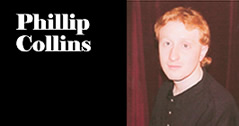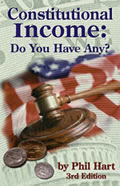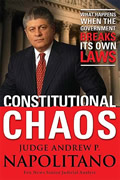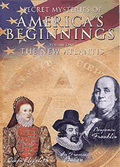Other
Collins
Articles:
Darwinism and the Rise of Gnosticism
Engineering Evolution: The Alchemy of Eugenics
DESECRATING CHRIST
Phillip
D. Collins
April 8, 2007
NewsWithViews.com
On March 31, 2007, a controversial exhibit that was scheduled for release during Holy Week at a Manhattan art gallery was cancelled (�Controversial chocolate Jesus exhibit canceled,� no pagination). Entitled �My Sweet Lord� by sculptor Cosimo Cavallaro, the exhibit was a �nude, anatomically correct chocolate sculpture of Jesus Christ� (no pagination). Cavallaro�s �artwork� was met with heavy opposition from the Catholic community, particularly Cardinal Edward Egan (no pagination). No doubt, some might consider Cavallaro�s exhibit a misunderstood artistic statement. Others might view it as a disrespectful, yet permissible form of expression. However, Queens resident Debbie Charan raised an interesting question: �He's not wearing any clothes at all. Why would they want to do something like that?" (Pesce and Salamone, no pagination).
Indeed, why present Jesus naked upon the cross? The exhibit�s conspicuous absence of a loincloth seems to suggest some sexual connotations surrounding Cavallaro�s message. Why else would Jesus Christ, who Christians believe to have been a virgin all of His life, be presented unclothed? In the present cultural milieu, which increasingly dignifies the Gnostic contentions that Jesus was sexually active, Cavallaro�s �My Sweet Lord� seems right at home. If art can act as an indicator of society�s cultural trajectory, then what sort of tectonic shift in Western civilization does Cavallaro�s work suggest? Perhaps this question can be answered through the examination of another similar exhibit that surfaced over a decade earlier.
In 1989, Robert Mapplethorpe and Andres Serrano unveiled a photo of a crucifix immersed in Serrano�s urine (Raschke 175). Entitled Piss Christ, the exhibit generated a flurry of objections from several Christian groups (175). Among one of the criticisms of the piece was that it represented �state subversion� of Christians� �fundamental beliefs� (175). This contention was reinforced by the fact that the National Endowment subsidized the work of Serrano and Mapplethorpe for the Arts (175). Avante-garde apologists retaliated, contending that �Piss Christ was nothing more than a vivid pronouncement of disgust with commercialized religion� (175). Yet, Professor of Religious Studies Carl A. Raschke has characterized this response as �a little bit disingenuous,� especially for those astute percipients that understood �the mentality of the aesthetic terrorist� (175). What is aesthetic terrorism? Raschke elaborates:
The concept of the aesthetic terrorist has been enunciated in an article in Harper�s Magazine by Alberto Moravia. Terrorism, Moravia points out, is an idiosyncrasy of the modern era and of modern thought and fashion. It is the scimitar of avant-garde culture. Terrorism can only thrive where there is constant revolutionary agitation and movement, where there is an obsession with history, and there is an actual set of cultural values adulating change. (171)
According to Raschke, aesthetic terrorism embraces art as an agent of cultural deconstruction. The mission of the aesthetic terrorist is the displacement of traditional values and the enshrinement of a new moral code. In essence, aesthetic terrorism constitutes a revolt against classical culture on behalf of moral anarchism:
In classical culture, according to Moravia, values were �eternal;� they never changed. Values were timeless plumb lines of right and wrong, truth and falsity, justice and injustice. In modernity, on the other hand, values are forever in transit � they are site. The modern revolutionary temper has arisen from the rage to overturn old values and supplant them with shining, new ones. Terrorism becomes a �style� of revolutionary political struggle, because it is not only a regime that must be replaced, it is the people�s very moral fabric and intellectual marrow as well. Terror is connected, as Moravia emphasizes, �to the idea of power� inasmuch as �person who gives the impression of knowing how to foresee the movements of values through time will be the one who gets hold of power.� (171-72)
Thus, one could characterize aesthetic terrorism as a form of postmodern radicalism that co-opts art and transforms it into an instrument of cultural revolution. For the aesthetic terrorist, portraits, sculptures, and other images of art constitute an extremely potent societal and cultural solvent. No longer does art act as a form of personal expression. It becomes a weapon of semiotic warfare. Raschke briefly synopsizes the development of aesthetic terrorism:
The concept of art as a revolutionary battering ram that flattens the old values of society and drives their opposite into the shafts of experience developed during the Romantic age. It became a favorite theory among the artistic radicals of the nineteenth century, whose fellowship frequently overlapped with the occult underworld. The growth of aesthetic terrorism as a surrogate for political radicalism had its origins in France, especially within the circles close to [Charles] Baudelaire, and it seems to have flowered at approximately the same time the political momentum of revolution throughout Europe was waning. (172)
The occult character of aesthetic terrorism becomes evident when one examines Charles Baudelaire. Raschke provides some background on Baudelaire unique �interests�:
Baudelaire himself was obsessed with the �powers of the dark,� symbolized in the archetypal personage of Lucifer, as the source of both poetic inspiration and human redemption. (117)
The fact that aesthetic terrorism was fostered within �circles close to Baudelaire� suggests a certain continuity of thought. The nature of that continuity might have been distinctly Luciferian. Not surprisingly, another aesthetic terrorist named Kenneth Anger would produce the film Lucifer Rising in 1967 (167). As a disciple of notorious occultist Aleister Crowley and a member of Anton LaVey�s Satanic Church, Anger possessed all the esoteric knowledge requisite for the translation of the Luciferian Weltanschauung to film (167-68). Raschke expands on the Luciferian theme of Anger�s film:
Anger remarked, rather blandly, to interviewers that Lucifer Rising was about a counterpose of life and death forces. �It�s about the angel-demon of light and beauty named Lucifer,� he said. �And it�s about the solar deity. The Christian ethos has turned Lucifer into Satan. But I show it in the gnostic and pagan sense. Lucifer is the rebel angel behind what�s happening in the world today. His message is that the key of joy is disobedience.� (168)
Anger�s vision was translated to celluloid in a rather grandiose style. The film was a visceral amalgam of occult symbols, 60s rock icons, and antiwar statements. Raschke describes this bizarre cinematic concoction:
The original footage for Lucifer Rising included footage of the Rolling Stones, a helicopter touching down in Vietnam, and alchemical tattoos. The movie was concocted not merely as art but as a ritual event in keeping with the principles hammered out by Crowley. Like experimental artists before him, Anger wanted to be metamorphosized into his own myth. (168)
Yet, Anger was not content with Lucifer Rising being confined to the medium of film. The occult filmmaker wished to see the images of Lucifer Rising tangibly enacted in a ritualistic fashion:
Anger wanted Lucifer Rising to be performed as a dramaturgical spectacle right at the fall equinox at the Straight Theater in the Haight. In Anger�s opinion, the advent of autumn that year was not simply the passing of one more solar milestone. It was truly the Equinox of the Gods, as magical fete corresponding to the unveiling of the new eon. (168-69)
Thematic elements of Luciferianism were also detectable within the later work of Robert Mapplethorpe. These elements become evident when one examines Mapplethorpe�s other work, which was made available by the New York Times in the wake of the public outrage at the release of Piss Christ. Raschke explains:
In its rather prosaic synopsis of the political uproar, the New York Times printed Mapplethorpe�s 1982 work Self Portrait (With Gun and Star). The picture shows the artist in the pose of a leather-jacketed terrorist cradling a machine gun with the �star� as backdrop. The star is clearly an inverted pentagram, the supreme symbol of religious satanism. In another self-portrait, he is the Devil with horns. A critical review of Mapplethorpe in ARTnews called him �the visual poet of our dark side� as well as �prince of darkness, angel of light� � a most fitting series of sorbriquets for the Luciferian imagination. (175-76)
In light of these observations, the actual message of Mapplethorpe�s Piss Christ becomes clear. This leaves one with the question of Cavallaro�s message in �My Sweet Lord.� Again, the nude presentation of Christ is replete with sexual connotations. If a sexual message was not what Cavallaro had in mind, then why did he eschew Jesus� loincloth in the first place? Cavallaro claims to be a Christian. Yet, his odd view of the Savior calls this claim into serious question.
Moreover, �My Sweet Lord� seems to share a few semiotic synchronicities with Mapplethorpe�s Piss Christ. There is, of course, the iconic continuity with the cross motifs. However, there may also be some deeper thematic continuity. Like Mapplethorpe�s Piss Christ, Cavallaro�s �My Sweet Lord� could have some occult interpretations. The overt sexual connotations of Cavallaro�s sculpture semiotically gesticulate towards an inherently Gnostic theme. Kenneth Anger attempted to re-conceptualize Lucifer in a �gnostic and pagan sense.� Cavallaro could be attempting to do the same with the antithesis of Lucifer, Jesus Christ.
It is especially interesting that Cavallaro�s exhibit was scheduled for release during the Holy Week. A spokesperson for the Manhattan art gallery claimed that the exhibit�s scheduled release was purely unintentional (�Controversial chocolate Jesus exhibit canceled,� no pagination). This may be the case. Yet, one cannot help but recall the aspirations of Anger, who hoped to see the dramaturgical enactment of Lucifer Rising executed specifically during the fall equinox.
|
Subscribe to the NewsWithViews Daily News Alerts! |
If
nothing else, Cavallaro�s work has strengthened the movement for the
cultural revaluation of Jesus Christ. This revaluation is anything
but amicable to Christianity. Antonin Artaud presented the mandate
for the aesthetic terrorist when he said, �All that is dark, buried
deep, unrevealed in the mind, should be manifested in a sort of physical
projection, as real� (qutd. in Raschke 167). One cannot help but wonder
if Cavallaro is realizing this mandate.
Sources Cited:
1,
"Controversial
chocolate Jesus exhibit canceled." CNN 31 March 2007
2, Pesce,
Nicole Lyn and Gina Salamone. "Choc full o' anger." NYDailyNews.com
31 March 2007
3, Raschke, Carl A. Painted Black. New York: Harper Collins Publishers,
1990.
� 2007 Phillip D. Collins
- All Rights Reserved
Phillip D. Collins acted as the editor for The Hidden Face of Terrorism. He has also written articles for Paranoia Magazine, MKzine, NewsWithViews, B.I.P.E.D.: The Official Website of Darwinian Dissent, the ACL Report, Namaste Magazine, and Conspiracy Archive. In 1999, he earned an Associate degree of Arts and Science. In 2006, he earned a bachelors degree with a major in communication studies and a minor in philosophy. During the course of his seven-year college career, Phillip has studied philosophy, religion, and classic literature.
He has recently completed a newly expanded and revised edition of The Ascendancy of the Scientific Dictatorship (ISBN 1-4196-3932-3), which is available at Amazon.com. He is also currently co-authoring a collection of short stories, poetry, and prose entitled Expansive Thoughts. It will be available late Fall of 2006.
E-Mail: collins.58@wright.edu
On
March 31, 2007, a controversial exhibit that was scheduled for release
during Holy Week at a Manhattan art gallery was cancelled (�Controversial
chocolate Jesus exhibit canceled,� no pagination). Entitled �My Sweet
Lord� by sculptor Cosimo Cavallaro, the exhibit was a �nude, anatomically
correct chocolate sculpture of Jesus Christ�














